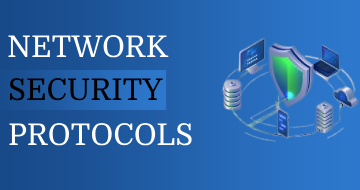IIRF Online > IT & Software > Network & Security > Network Security > NYUx: Network Security - Protocols
NYUx: Network Security - Protocols by Edx
Learn more fundamentals of network security, including cryptographic algorithms used in networking protocols, TLS/SSL, IPSec Layer 2 Security and Wireless Security.
Course Highlights
- Define and apply a substitution cipher
- Define cryptanalysis
- Explain at a high level the process by which a plaintext message is encrypted, transmitted, and decrypted.
- Describe at least two strategies for breaking an encryption scheme
- Identify the differences between public key encryption, symmetric key encryption, and hashing
- List and summarize the characteristics of good ciphers
- Describe the vulnerabilities of stream ciphers
- Define AES and explain why it is recommended over 3DES
- Define cipher block chaining
- List the steps in creating an RSA public/private key pair
- Explain why RSA is secure
- Define message integrity and explain how it is ensured
- Define IPSec and list its services
- Define authentication header and ESP
- Explain the primary goal of IKE and describe its sub-protocols
- Summarize the five steps of IPSec Operation
- Summarize the history of SSL
- Explain how closure alerts can prevent a truncation attack
- Identify the protocols that make up the SSL architecture
- Describe how SSL/TLS provides protected channels
- State the differences between IPSec and SSL VPN connections
- Explain why it's important to consider Layer 2 security
- Define common Layer 2 attacks
- Identify tools used in Layer 2 attacks
- Describe countermeasures to Layer 2 attacks and security best practices to prevent attacks
- Explain the differences between the 2.4GHz and 5GHz spectrums
- Provide definitions of basic wireless terms
- Explain how 802.11ac differs from earlier 802.11 standards
- Identify and define the types of 802.11 frames
- List and define the states of 802.11 sessions
- List the steps in establishing an 802.11 session
- Summarize the existing wireless security protocols and state which protocols should not be used
- Summarize WPA, WPA Enterprise, and generalized WiFi attacks
Skills you will learn!
Curriculum

NYUx: Network Security - Protocols














